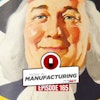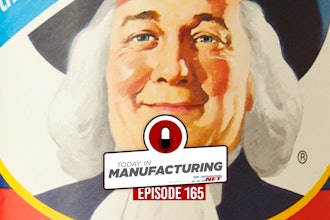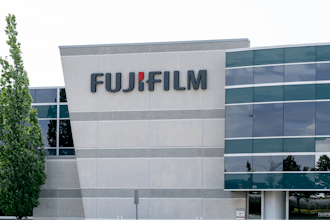Although most people tend to think of manufacturing when hearing the term "lean," the primary principles of lean easily lend themselves to successful adoptions of ERP (enterprise resource planning) systems. The basic principles of lean manufacturing focus on process flow, optimization, waste elimination, problem solving, and continuous improvements. Without question, these same principles guide the most successful ERP implementations. Learning how to translate the concepts of lean manufacturing over to ERP implementation and usage can help turn a potential project failure into fast ROI dollars.
ERP Equals Process Flow
Lean concepts start with a steady flow of employees, tasks, and associated goods. This uncluttered and continual process flow is paramount for the success of any lean implementation. This same concept is an integral part of the selection, implementation, and ongoing usage of an ERP system.
Instead of picturing the seamless movement of physical goods within the manufacturing process, envision the effortless movement of data within an ERP system. As with lean manufacturing, a lean ERP system facilitates the ease of movement of information from one task to another, from one employee to another.
A truly lean process flow is one where the employee is fully immersed in the task he or she is performing. Instead of trying to decide on the best method of performing the task, the employee is simply executing the task at hand. The ERP system provides the employee with the next required task, associated data, and proper method of execution. As on the manufacturing plant floor, a solid ERP system provides an avenue for an effortless process flow throughout the entire organization.
Proper Configuration Equals Optimization
This effortless process flow comes not by chance. Regardless of an ERP package’s reputation, functionality, or cost - the package will only provide an optimal flow if the selection process was well planned, the right system selected, and the proper implementation methodology followed.
Lean experts agree on the importance of optimization. It is a key and critical element for any lean Sensei’. Within the world of ERP selection and implementations, optimization is achieved through a balance of an organization’s requirements, the software’s functionality, and the configuration of data and process flow within the system to equally tie the system’s abilities to those of the company’s needs. But this optimization does not come at installation or even at the initial go-live of the package. It is achieved through a combination of out of the box functionality, some number of custom modifications or configurations, and extended user training.
Integration Equals Waste Elimination
By definition, an ERP system equates to integration. The enterprise wide adoption of a package, purchased to manage the overall requirements of an organization, dictate that an elimination of multiple systems will occur and that a streamlined process flow will be adopted. This, in itself, leads to an integration of resources, employees, and tasks. And by a natural course of events, this integration leads to an elimination of waste.
An ERP system offers a multitude of opportunities for waste elimination. Virtually any ERP adoption offers reductions in data entry time and user errors, increases access to information, as well as substantially increases overall employee output and performance. For those truly focused on the concept of value stream mapping and waste elimination, the benefits of an ERP implementation can increase substantially.
Testing And Training Equals Problem Solving
A good test plan will take a lackluster or even disastrous implementation and help turn it into a positive experience for the majority of participants. A solid test plan equates to proactive problem solving through early resolution. It helps to push problem detection and management into the implementation stage of the project, helps resolve issues in a timelier manner, and causes little to no disruption to the project’s internal or external stakeholders.
But an adequate test plan cannot solve impending issues alone. Ask any software developer about what is one of their biggest complaints about a customer’s implementation strategy or ongoing system usage and the answer will be training. Every software package has users who under utilize system functionality due to limited user training. Limited or insufficient training force many well intentioned implementation teams to quickly fall into status quo mode shortly after their initial go-live.
A solid, well executed test plan and well trained users create a seamless transition for all of those involved, because in the end, these two project elements will make or break any system implementation.
Ongoing Benchmarking & Evaluation Equals Continuous Improvements
An ERP system and its ongoing usage is an evolution. Successful adoption and solid return on investment does not come overnight. It is a long-term project and an ongoing process. It involves a solid selection plan, quality testing, intensive user training, and active participation by all levels within the organization. Most important, however, is a periodic and thorough self-evaluation which provides a means of reassessment throughout the system’s entire lifecycle.
Obtaining the full benefits of an ERP system, regardless of the ERP system at hand, requires an unending pursuit of continuous improvement. It requires a review of initial goals and milestones, an objective evaluation of the current state and a specific plan to close out any existing process or functional gaps. This gap analysis should occur shortly after go-live, a year after go-live, and any time a new software release or major corporate structural change occurs.
Typical Self Evaluation Questions
Executing continuous improvement practices does not require an army of employees. A quick self evaluation can occur in answering some basic, yet fairly comprehensive questions.
1. Do the users feel confident with the existing system?
2. Do the users have knowledge of the organization’s operational flow and how their responsibilities fit within this flow?
3. Do the users routinely manage off-line systems (typically spreadsheets or other small database applications) to either do their jobs or to maintain information they need to function in their job?
4. Do the users have enough solid information to make educated and timely business decisions?
5. Is there an ever growing number of user complaints regarding their ability to do their jobs in an efficient and timely manner?
6. Does the system help users confidently meet the needs of other internal (employees) or external (customers, partners, etc.) stakeholders?
7. Has the existing software’s latest release been reviewed? Can these new functional improvements better the operations and output of the organization?
2. Do the users have knowledge of the organization’s operational flow and how their responsibilities fit within this flow?
3. Do the users routinely manage off-line systems (typically spreadsheets or other small database applications) to either do their jobs or to maintain information they need to function in their job?
4. Do the users have enough solid information to make educated and timely business decisions?
5. Is there an ever growing number of user complaints regarding their ability to do their jobs in an efficient and timely manner?
6. Does the system help users confidently meet the needs of other internal (employees) or external (customers, partners, etc.) stakeholders?
7. Has the existing software’s latest release been reviewed? Can these new functional improvements better the operations and output of the organization?
If you find yourself answering no to many of these questions, your organization can certainly benefit from a review of your current system. These newly discovered gaps can be addressed via a number of different short-term or long-term projects. Resolution can be as simple as performing additional user training or having your software vendor perform an onsite benchmarking workshop. Or in some cases, resolution may require more in depth action such as the initiation of a thorough evaluation of a new software package.
Regardless of the resulting gaps and associated corrective action, ongoing self evaluation and continuous improvement efforts are necessary for efficient and profitable operations. Just as adopting lean methods on the manufacturing plant floor is an ongoing pursuit of perfection and a never ending process of improvement, so is adopting lean within the world of ERP.
Rebecca Gill can be reached at 800 837-0028 or [email protected].






















